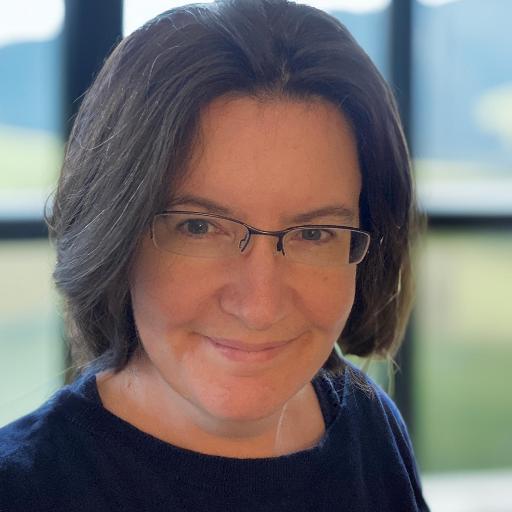News
Our Top Story
University of Warwick named UKCISA International Institution of the Year
The University of Warwick has been named Institution of the Year by the UK Council for International Student Affairs (UKCISA), recognised for its exceptional commitment to international student inclusion.
Our Latest News
Warwick launches new project to tackle responsible AI in financial services
The safe and responsible deployment of generative AI for financial advice is being addressed by experts at Warwick Manufacturing Group (WMG), University of Warwick after securing new UKFin+ funding.
AI innovation missing the mark for local communities, University of Warwick report warns
New research finds communities across the UK feel left out of the benefits of public sector artificial intelligence – calling for more public participation in AI policy.
Warwick rises in QS World University Sustainability Rankings
Warwick rises 34 places to 83rd place in global sustainability study, receiving particular praise for its strong Governance and Social Impact.
National treasure Celia Imrie surprises Warwick Arts Centre film audiences with £10,000 National Lottery funding boost
Celia Imrie surprises Warwick Arts Centre audience with announcement of £10,000 National Lottery funding for 'Handle with Care!' inclusive cinema season.
Warwick welcomes MPs from the House of Commons’ Education Select Committee
Four MPs visited Warwick for discussions on the present challenges, opportunities, and future of higher education.
Warwick drives solutions to Europe’s skills shortage
University of Warwick contributes to shaping Europe’s response to critical labour and skills challenges.
Christmas comes to campus as Warwick launches a season of festive events
Warwick will kick off its festive season with a Christmas Fayre on 26 November, bringing seasonal stalls, performances, and family-friendly activities to campus.
University of Warwick celebrated multiple shortlist nominations at THE Awards 2025
University of Warwick celebrated recognition across four categories at the 2025 Times Higher Education (THE) Awards, held on 13 November 2025 at the Edinburgh International Conference Centre.
Solving Britain's Housing Crisis: Where and How to Build 1.5 Million Homes
Warwick economists Dr Amrita Kulka and Dr Nikhil Datta have analysed billions of UK homebuyer searches, rental and sales listings, build patterns, and planning applications to explain why housebuilding targets have failed - and why Labour's 1.5 million homes may not be the answer either.
Warwick Prize for Women in Translation announces 2025 shortlist
Six titles have been shortlisted for the 2025 Warwick Prize, established by the University of Warwick in 2017 to address the gender imbalance in translated literature.
Pollution solution co-developed by Professor Anant Sudarshan reaches finals of 2025 Earthshot Prize
The world's first cap-and-trade market for particulate matter, developed by a team of researchers including Professor Anant Sudarshan, was shortlisted in the Clean Our Air category of this year's Earthshot Prize.
Ageing stars likely destroy their closest planets
Ageing stars look to be destroying the giant planets orbiting closest to them, according to a new study by astronomers at University of Warwick and UCL
Our Latest Expert Comment
Find an Expert
Our experts are available for interview on all the latest news stories.
In The Conversation...
What are our academics talking about?
Read the latest articles by Warwick academics published in The Conversation.
Our Press Team
We are available during both standard 9-5 hours and out-of-hours.
Beauchamp, Kat

Kat Beauchamp
She/her
Communications Manager (Media Relations)
Manages the Press Team and any external media relating to International and Strategic Projects. Get in touch about how our team can help you, media training, and broadcast media.
Baylis, Ann

Ann Baylis
She/her
Media & Communications Officer
Shining a media spotlight on Arts & Humanities, amplifying our achievements to a global audience.
All things rural! Married to a farmer. Keeps horses & dogs. Super-keen gardener. Likes making stuff.
Higgs, Matt

Matt Higgs
He/him
Media & Communications Officer (Science)
Working with our scientists and STEM faculty, I amplify Warwick’s science stories in the media, showcasing the university as a place of innovation and discovery.
Things I love: Hiking, Dogs, Books (fiction and non-fiction), Films, Exercising
Connell, Steve

Stevie Connoll
She/her
Media & Communications Officer
At Warwick, I help share the stories that bring our University to life, focusing on regional connections, building our brand, and showcasing why campus is such a great place to be.
Outside of work, I’m a busy mum who loves the gym, Grey’s Anatomy re-runs, and a big jar of Nutella!
Barker, Dom

Dom Barker
He/him
Media & Communications Officer
Dom handles press relations for politics, law, and economics, as well as corporate matters.
I'm interested in US politics (think The West Wing), and play table tennis as often as possible!


Dr Freya Harrison on Government plans to phase out animal experiments
Dr Shonali Banerjee on US election results
Dr Adriano Lameira & Dr. Ani Permana pay tribute to Dame Jane Goodall
Professor Thiemo Fetzer responds to the Government’s “Pride in Place” agenda
Dr Sangwoo Lee on the Latest ONS Labour Market Statistics
Professor Rebecca Earle and Dr Serin Quinn on the histories of the potato and the tomato